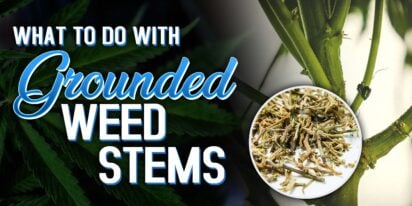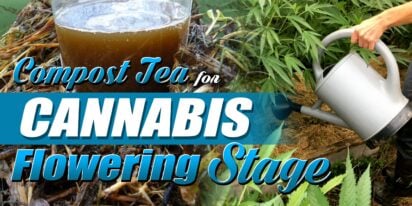
Are You 18 Or Over?
YesOr
No By clicking yes, you certify that you are over 18. By using this website, you agree to our legal disclaimer.605+ Cannabis Strains over 20 Breeders worldwide.
Table of Contents

Table of Contents
The roots of Landrace Sativas stretch back millennia to ancient civilizations in Central Asia, the Middle East, and beyond. Early growers carefully bred these plants to thrive in their local climates and customs, leading to the emergence of distinct regional types.
Indigenous to particular areas worldwide, Landrace Sativas showcase the individual environmental settings and cultivation methods of each region. From the Ethiopian highlands to the Jamaican mountains, these strains have thrived in a variety of landscapes and microclimates.
Landrace Sativas usually display tall, slender growth patterns with spacious internodal spacing and sparse leaves. They excel in outdoor growing conditions, where they can achieve remarkable heights and flourish under natural sunlight.
What’s particularly fascinating about Landrace Sativas is their wide range of aromas and flavors, which mirror their geographical roots and terroir. Whether it’s the fruity and floral scents of Thai Sativa or the earthy and spicy hints of Malawi Gold, each strain delivers a distinct sensory journey.
Growing Landrace Sativas successfully necessitates a subtropical to tropical climate with steady warmth, sunlight, and humidity. These plants flourish in areas with lengthy growing seasons and minimal temperature swings, making equatorial regions ideal.
Because of their tall and slender growth tendencies, Landrace Sativas might need extra support and training methods to boost yields and safeguard against wind or rain damage. Techniques like trellising, topping, and low-stress training can help control plant height and encourage uniform canopy growth.
Originating in Thailand, Thai Sativa is celebrated for its invigorating and uplifting effects, earning it a following among daytime consumers. It commonly yields elongated buds that carry a sweet and spicy fragrance, accompanied by a euphoric and cerebral high.
Coming from the African country of Malawi, Malawi Gold is cherished for its strong psychoactive impact and unique citrus taste. It’s famous for bringing on sensations of euphoria, creativity, and mental sharpness, making it a favored option among artists and musicians.
Originating from the mountainous areas of Colombia, Colombian Gold has deep roots in the cultivation practices of indigenous tribes and local farmers for generations. This strain, dominantly sativa, is known for its compact, resinous buds and its earthy, woody scent, offering a balanced and mood-lifting high.
Landrace Sativas present a diverse array of therapeutic advantages, including pain alleviation, mood enhancement, and appetite stimulation. They’re frequently employed to relieve symptoms of medical ailments like chronic pain, depression, anxiety, and nausea, devoid of the sedative traits typically linked with indica strains.
For recreational users, Landrace Sativas offer an uplifted and cerebral sensation that boosts creativity, sociability, and sensory awareness. They’re perfect for daytime pursuits and social occasions, providing an invigorating and stimulating encounter without the heaviness or immobilization often associated with indica strains.
Like all cannabis plants, Landrace Sativas are prone to pests such as spider mites, aphids, and caterpillars, as well as fungal diseases like powdery mildew and botrytis. Integrated pest management (IPM) methods, like using natural predators, organic pesticides, and good cultivation practices, can help prevent and control infestations without resorting to harmful chemicals.
Extreme weather conditions, such as high temperatures, heavy rains, and strong winds, can present challenges for outdoor cultivation of Landrace Sativas. Protective measures like growing in greenhouses, using shade structures, and setting up windbreaks can help reduce the impact of harsh weather and keep growing conditions optimal.
As globalization and industrialization threaten the genetic diversity of cannabis strains, As globalization and industrialization pose risks to the genetic variety of cannabis strains, safeguarding Landrace Sativas becomes more vital for future generations. These original cultivars act as genetic reservoirs for breeding programs, research endeavors, and the preservation of cultural heritage.
Numerous organizations and initiatives are committed to protecting Landrace Sativas and advocating for biodiversity in the cannabis sector. Through seed banks, germplasm collections, and collaborative research projects, these initiatives strive to guarantee the continued existence of these valuable genetic resources and traditional farming methods.
Landrace Sativas offer a window into the cultural heritage and botanical diversity of cannabis strains worldwide. With their unique flavors, effects, and medicinal properties, these ancient cultivars continue to captivate enthusiasts and inspire conservation efforts to preserve their legacy for future generations.
Q: Are Landrace Sativas suitable for indoor cultivation?
A: While Landrace Sativas can be grown indoors with proper lighting and climate control, they tend to thrive best in outdoor environments with abundant sunlight and space.
Q: Do Landrace Sativas have higher THC levels compared to hybrids?
A: THC levels vary among different cannabis strains, including Landrace Sativas and hybrids. Some Landrace Sativas may have high THC content, while others may be lower in potency.
Q: How can I acquire seeds or clones of Landrace Sativa strains?
A: Seeds and clones of Landrace Sativa strains can often be obtained from reputable seed banks, breeders, or cannabis dispensaries specializing in heirloom varieties.
Q: What are the typical flowering times for Landrace Sativas?
A: Landrace Sativas generally have longer flowering periods compared to indica or hybrid strains, often ranging from 10 to 14 weeks or more depending on the specific variety and growing conditions.
Q: Are Landrace Sativas more resistant to pests and diseases?
A: While Landrace Sativas may possess some natural resistance to pests and diseases due to their adaptation to specific environments, they are still susceptible to infestations and infections without proper care and management.

[ez-toc] In indoor gardening, maintaining an optimal temperature within your grow tent is crucial for the health and productivity of your plant

[ez-toc] Welcome to the delightful world of cannafudge crafting, where sweetness meets sophistication, and cannabis infusion adds a unique twis

[ez-toc] You’ve finished trimming your weed, but what about those leftover stems? Don’t throw them away! These seemingly useless bits can a

Feeling high can be an exhilarating experience, but it's essential to make the most of it by engaging in activities that enhance the sensation a

[ez-toc] Starting with planting cannabis seeds might seem simple, but how deep should cannabis seeds be planted for them to grow well. In this

[ez-toc] In the realm of cultivating cannabis, maximizing growth during the flowering stage is a top priority for growers. While various method

[ez-toc] Nutrient burn is a common issue among plant enthusiasts, often resulting from over-fertilization or improper nutrient application. It

[ez-toc] Welcome to our complete guide to dealing with harmful pathogenic mold in cannabis. For those who grow cannabis, preventing mold is vit

In recent years, there has been speculation about “did Shakespeare smoke weed?” This idea originates from a study by South African anthropol

[ez-toc] Welcome to the hidden world beneath the soil – the inside of the marijuana root system. While the vibrant leaves and resinous flower

Are You 18 Or Over?
YesOr
No By clicking yes, you certify that you are over 18. By using this website, you agree to our legal disclaimer.